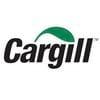The Cost of Deamination in Reduced-Crude Protein Broiler Diets
Published: December 6, 2021
Summary
I. INTRODUCTION Reductions in crude protein (CP) contents of broiler diets have been realised for decades by routine additions of unbound (synthetic or crystalline) methionine, lysine and threonine, and are likely to continue as inclusion costs for the balance of amino acids become more feasible. Reduced-CP diets have the potential to provide environmental advantages from attenuated nitrogen a...
Content from the event:
Related topics:
Mentioned in this news release:

Aviagen

Influencers who recommended :
Victor Naranjo HaroRecommend
Comment
Share
27 de marzo de 2025
Hi Drs. And authors...
The cost of deamination in reduced-crude protein (RCP) broiler diets is a critical issue in poultry nutrition. While reducing dietary crude protein has advantages such as lower nitrogen excretion and improved gut health, it also presents challenges related to amino acid metabolism. Here are some new issues to consider:
> Impact of Deamination on Broiler Performance
- Energy Cost of Deamination
• When excess amino acids are deaminated, they must be excreted, which consumes ATP and increases metabolic heat production. This may affect feed efficiency and heat stress tolerance, especially in hot climates.
• The energy cost of processing nitrogenous waste (via the uric acid cycle) may reduce net energy available for growth.
. Reduced Protein
. Liver and Kidney Stress
. Digestive Efficiency
> Economic and Environmental Costs
. Increased Feed Costs: While reducing CP levels may lower the cost of expensive protein sources like soybean meal, the need for synthetic amino acid supplementation can offset some of these savings.
. Higher Energy Demand: The ATP cost associated with deamination and nitrogen excretion may reduce the efficiency of feed conversion, impacting overall feed economics.
. Environmental Impact.
> Strategies to Minimize Deamination Costs in RCP Diets
- Imbalance of Essential vs. Non-Essential Amino Acids
• RCP diets rely on synthetic amino acid supplementation. However, improper balancing of essential amino acids (EAA) can lead to inefficient nitrogen utilization and higher deamination of surplus non-essential amino acids (NEAA).
• The ideal ratio of EAA:NEAA is still debated, and an imbalance may increase catabolism of functional proteins rather than lean muscle deposition.
. Energy-Amino Acid Synchronization.
- Ammonia Production and Gut Health
• Increased deamination leads to higher ammonia production in the gut, which can negatively affect intestinal barrier function and increase susceptibility to enteric pathogens.
• This can compromise microbiome stability, leading to higher incidence of dysbiosis, Clostridium infections, and necrotic enteritis.
- Liver and Kidney Load
• The liver is responsible for deamination and urea cycle processing, while the kidneys handle nitrogenous waste excretion.
• RCP diets may still result in metabolic stress on these organs if the amino acid profile is unbalanced, potentially leading to fatty liver syndrome or renal dysfunction over time.
- Impact on Immunity and Stress Response
• Amino acid deamination affects glutamine and arginine metabolism, both of which are crucial for immune function.
• Suboptimal amino acid utilization may lead to immunosuppression, reduced vaccine response, and higher susceptibility to immune challenges like mycotoxins, viral infections.
- Undiscovered Roles of Minor Amino Acids
• Traditionally, broiler nutrition focuses on lysine, methionine, threonine, and tryptophan. However, less studied amino acids (e.g., serine, glycine, histidine) play important roles in metabolism, immunity, and thermoregulation.
• RCP diets may not sufficiently consider these amino acids, leading to hidden metabolic inefficiencies.
- Interaction with Feed Additives
• Enzymes (e.g., proteases, xylanases), probiotics, and organic acids are often used to improve digestibility in RCP diets.
• However, their effectiveness varies based on diet composition, and they may not fully counteract the cost of deamination, especially under challenging farm conditions.
The cost of deamination in reduced-crude protein (RCP) broiler diets is a critical issue in poultry nutrition. While reducing dietary crude protein has advantages such as lower nitrogen excretion and improved gut health, it also presents challenges related to amino acid metabolism. Here are some new issues to consider:
> Impact of Deamination on Broiler Performance
- Energy Cost of Deamination
• When excess amino acids are deaminated, they must be excreted, which consumes ATP and increases metabolic heat production. This may affect feed efficiency and heat stress tolerance, especially in hot climates.
• The energy cost of processing nitrogenous waste (via the uric acid cycle) may reduce net energy available for growth.
. Reduced Protein
. Liver and Kidney Stress
. Digestive Efficiency
> Economic and Environmental Costs
. Increased Feed Costs: While reducing CP levels may lower the cost of expensive protein sources like soybean meal, the need for synthetic amino acid supplementation can offset some of these savings.
. Higher Energy Demand: The ATP cost associated with deamination and nitrogen excretion may reduce the efficiency of feed conversion, impacting overall feed economics.
. Environmental Impact.
> Strategies to Minimize Deamination Costs in RCP Diets
- Imbalance of Essential vs. Non-Essential Amino Acids
• RCP diets rely on synthetic amino acid supplementation. However, improper balancing of essential amino acids (EAA) can lead to inefficient nitrogen utilization and higher deamination of surplus non-essential amino acids (NEAA).
• The ideal ratio of EAA:NEAA is still debated, and an imbalance may increase catabolism of functional proteins rather than lean muscle deposition.
. Energy-Amino Acid Synchronization.
- Ammonia Production and Gut Health
• Increased deamination leads to higher ammonia production in the gut, which can negatively affect intestinal barrier function and increase susceptibility to enteric pathogens.
• This can compromise microbiome stability, leading to higher incidence of dysbiosis, Clostridium infections, and necrotic enteritis.
- Liver and Kidney Load
• The liver is responsible for deamination and urea cycle processing, while the kidneys handle nitrogenous waste excretion.
• RCP diets may still result in metabolic stress on these organs if the amino acid profile is unbalanced, potentially leading to fatty liver syndrome or renal dysfunction over time.
- Impact on Immunity and Stress Response
• Amino acid deamination affects glutamine and arginine metabolism, both of which are crucial for immune function.
• Suboptimal amino acid utilization may lead to immunosuppression, reduced vaccine response, and higher susceptibility to immune challenges like mycotoxins, viral infections.
- Undiscovered Roles of Minor Amino Acids
• Traditionally, broiler nutrition focuses on lysine, methionine, threonine, and tryptophan. However, less studied amino acids (e.g., serine, glycine, histidine) play important roles in metabolism, immunity, and thermoregulation.
• RCP diets may not sufficiently consider these amino acids, leading to hidden metabolic inefficiencies.
- Interaction with Feed Additives
• Enzymes (e.g., proteases, xylanases), probiotics, and organic acids are often used to improve digestibility in RCP diets.
• However, their effectiveness varies based on diet composition, and they may not fully counteract the cost of deamination, especially under challenging farm conditions.
Recommend
Reply
1

Would you like to discuss another topic? Create a new post to engage with experts in the community.















